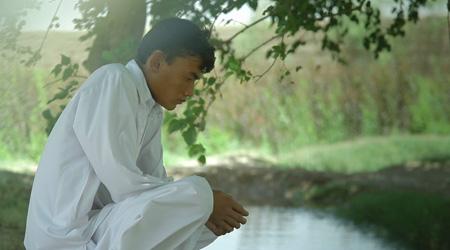The other day I saw a film from Afghanistan about Western-style hair salons opening up in one of the big cities.
"One of my first participants got his face punched and his phone smashed, but they were all ready to live with such consequences. Luckily, that turned out to be the worst that happened."
If the war isn't viewed from the ranks of Western troops, which is generally the case, we are presented with feel-good stories from the cities – like the one I saw. When a story does contain material describing the conditions in rural areas where most of the Afghan population lives and where the war is actually fought, it's typically by way of statistics or the occasional image of wounded or dead civilians.
I got the idea for my film after working for years as a journalist in Afghanistan without being "embedded", that is, I wasn't under military protection or subject to their rules and restrictions. As a result, I came into direct contact with the locals, whose stories I have tried to tell in reports, articles and in my recent book whose Danish title translates as "The Story Not Being Told".
We tend to forget
It frustrated me that I didn't see my experiences reflected in the general media coverage. All I saw was an oversimplified representation of the war: a conflict between the good Western military and their Afghan allies, and the supremely evil rebels as their foes.
In reality, it is a complex conflict with lots of grey areas, and as in any other war the biggest victims are the civilian population.
It may sound like a cliché, but I wanted to make a film that portrays Afghans as human beings, for good or ill. Many of the images we are usually presented with, for instance from Helmand – where my film was shot – are of deserted wastelands where two warring parties shoot and bomb away without much consequence. That's exactly why the film's premise, cliché or not, is so important to establish, because far too often we forget that there are people living in the middle of the war. Flesh-and-blood people caught in the middle and in spite of it all trying to have a normal life.
Mobile phones was the solution
Trying to depict the war in Afghanistan at close range is fraught with peril. Spending time in the villages is a big risk for journalists, because the rural population in Afghanistan, unlike so many other places in the world, do not view journalists as objective parties but as an extension of the hated Afghan government or as being in cahoots with the foreign forces that they generally regard as an evil. For those reasons, most journalists usually depict life in the conflict-ridden areas in shoot-and-run footage, because they stay in the villages so briefly.
I personally experienced the results of that risk when I was kidnapped by the Taliban in 2008, while attempting to depict Afghans in their own surroundings over an extended period of time. Being considered a government or foreign-force collaborator could ultimately have put my life and others in danger.
To protect the civilians and still be able to report on their lives, I came up with the idea of giving them mobile phones so they could film themselves instead. Mobile phones are ubiquitous in Afghanistan, while camcorders are still a rarity, especially in the rural areas. This was a way of "staying with them", without endangering their lives nor mine.
Greater risk for the women
So, in 2009, I travelled to Helmand and handed out mobile phones to a group of local Afghans that I wanted to be in the film. We had done a lot of research and familiarised ourselves with the potential consequences. We knew that they risked getting their phones smashed or getting beat up by the rebels. In fact, one of my first participants got his face punched and his phone smashed, but they were all ready to live with such consequences. Luckily, that turned out to be the worst that happened underway as a direct effect of our project.
My biggest challenge, however, was to find women to work with – and keep them on the project. It would not have been much of a problem to find a woman in a big city like Kabul, but I wanted to show real life in the villages, where people traditionally are much more conservative than in urban areas.
The women would be taking a far greater risk than the men because of how rumours spread in village-based societies, where concepts of honour are a big deal. An Afghan woman is not expected to leave the home, unless it is absolutely necessary. Contact with strange men could ultimately cost her her life.
But I had to try. A film without women would not have painted an accurate picture of village life.
The consequences of war are always worse for the civilians, who are generally unable to influence decisions and are left as the biggest losers. Still, it is not my ambition to portray Afghans as powerless victims for us to pity. Through their own eyes, we see how they live their lives despite difficult and uncertain conditions, with joys, sorrows, dreams and needs that are not all that different from our own.
